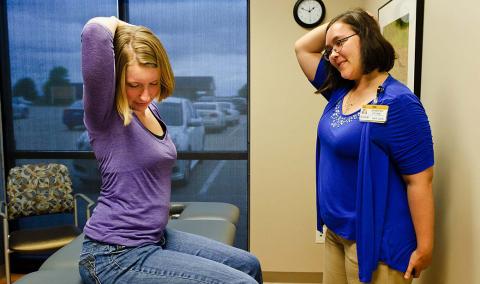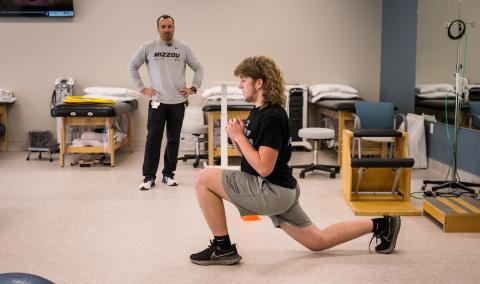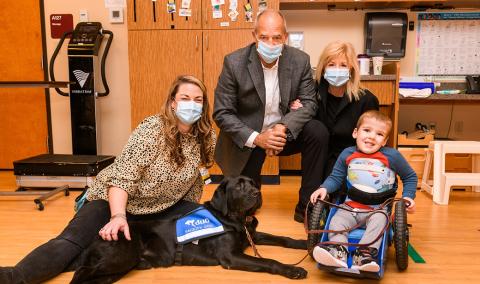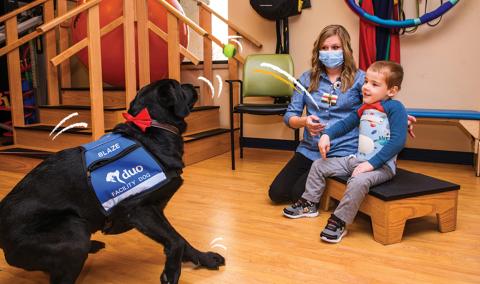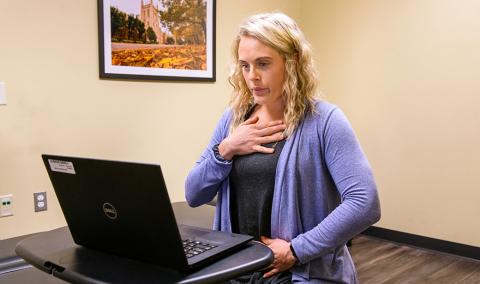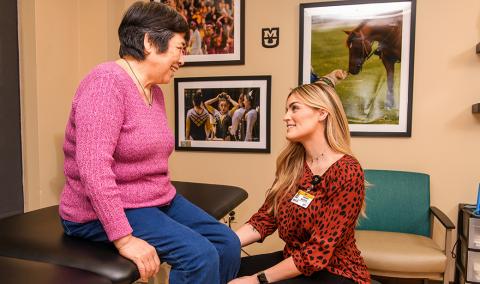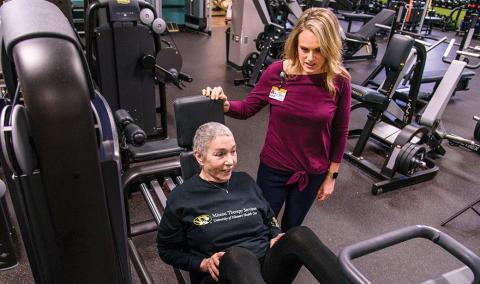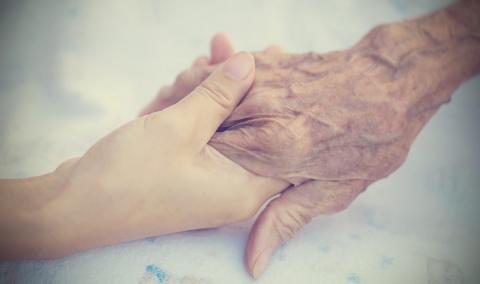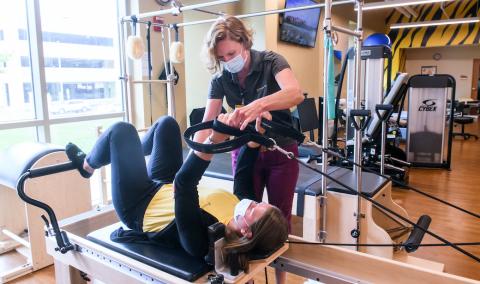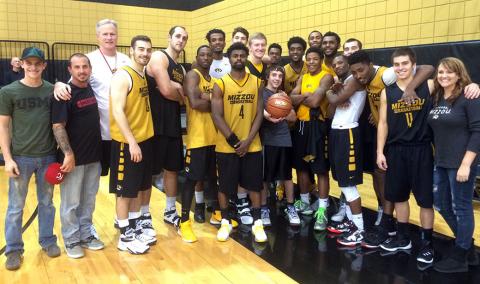MU Health Care offers a variety of nonsurgical pelvic health treatments that can help you recover from conditions that can be painful or embarrassing.
Among the pelvic conditions we treat through physical therapy: pregnancy and postpartum care, urinary incontinence, constipation, pelvic organ prolapse, rehabilitation after abdominal surgeries, male pelvic floor dysfunction, dyspareunia (pain during or after intimacy), pudendal neuralgia, chronic pelvic pain, pediatric pelvic floor dysfunction, fecal incontinence and coccydynia (tailbone pain).
We offer the following specialized treatments and techniques in addition to our surgical solutions.
Real-time ultrasound
The physical therapists at our Range Line, Forum and Missouri Orthopaedic Institute locations use real-time ultrasound imaging to allow you to see your pelvic floor muscles. Visual feedback helps you feel what your muscles are doing in combination with verbal cuing and teaching from the physical therapists. The ultrasound imaging is done by placing a wand on the abdomen. This wand then generates sound waves to create an image that is transmitted to a screen.
Hypopressives
Sami Turley, DPT, of the Forum location, has special training in core and pelvic floor restoration, postpartum recovery at any stage and recovery from hip injuries. She has certification in the hypopressives method — also known as low-pressure fitness — which is a postural and core restoration program designed to create synergy between the diaphragm, pelvic floor, abdominals and back musculature. It is used in the treatment of pelvic organ prolapse and pelvic floor hypertonicity.
Myofascial release
This is a soft-tissue mobilization that relieves overactivity and tension in muscles, lack of mobility in fascia and improves scar tissue mobility. Our pelvic physical therapists have received training in myofascial release techniques for pelvic floor and abdominal dysfunction.
Pelvic floor muscle down-training
This technique is used for muscles that are overactive or in spasm. It teaches people how to relax their muscles and can include the use of visual tools, tactile feedback, verbal teaching and cuing, and stretching.
Pelvic floor muscle up-training/strengthening
This treatment is used when the muscles in the pelvic floor are either not strong enough or not coordinated enough for functional activities. Methods include visual feedback (typically via real-time ultrasound), verbal coaching and work with coordinating with other muscle groups in the body.
Behavioral training
Behavioral or ergonomic modification training is used when something in the environment or lifestyle is contributing to the patient’s problems. This can include dietary tracking, toileting position suggestions or specific activities to do or avoid. The recommendations will be based on an individual evaluation performed by the physical therapist.
Related Conditions & Treatments
- Aquatic Therapy
- Blood Flow Restriction Therapy
- Cancer Rehabilitation
- Children's Therapy
- COVID Recovery Program
- Pediatric Inpatient Rehabilitation
- Pediatric Pelvic Floor Therapy
- Neurological Rehabilitation
- Occupational Therapy
- Pelvic Pain
- Physical Therapy
- Specialized Therapy
- Speech Therapy
- Sports Therapy



